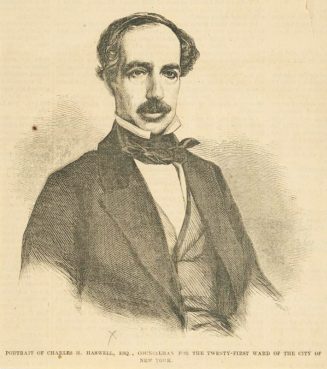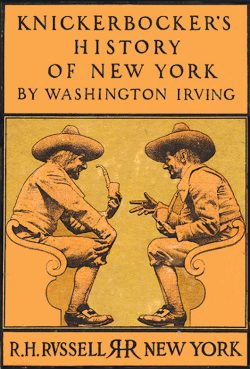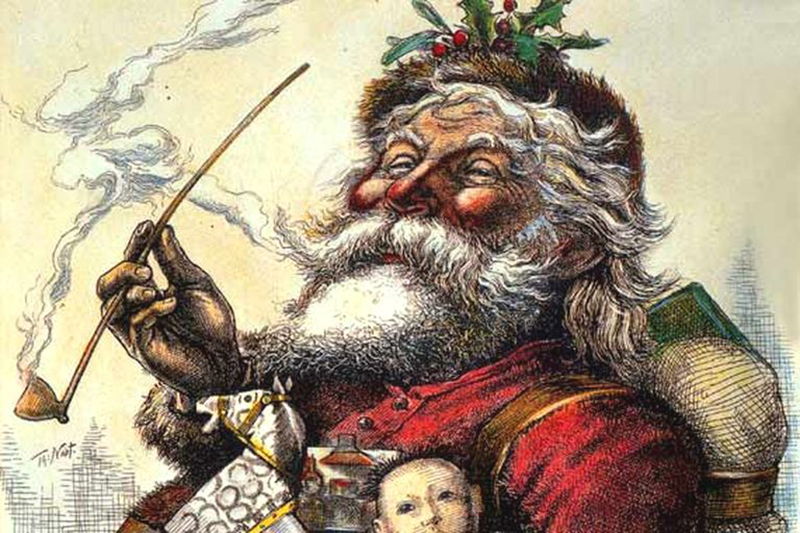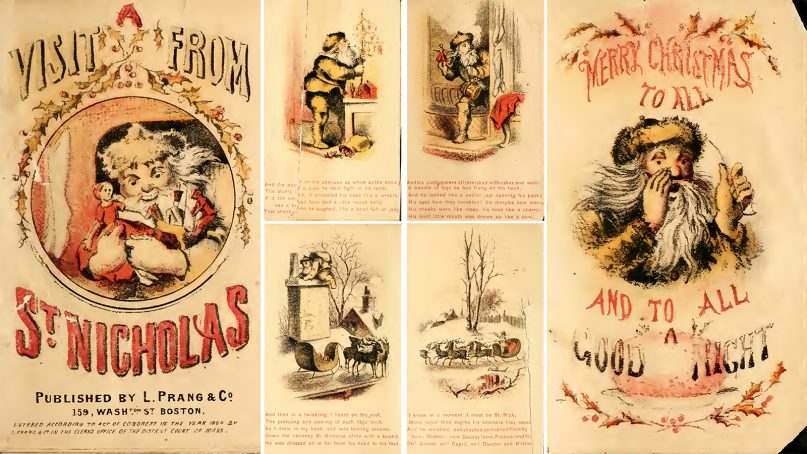(RNS) — Charles Haynes Haswell, who grew up in the 1820s in New York City, remembered in his memoirs that in his youth, “Christmas was very slightly observed as a general holiday.” A few years later, when Haswell was at boarding school on Long Island, Christmas was altogether ignored.
It wouldn’t be until 1849, by which time Haswell was on his way to a long career in the city’s Tammany Hall political machine, that Christmas became a legally recognized holiday in the state of New York, following Alabama and other Southern states a decade earlier. But by then New York City had already given birth to the winter festival that is celebrated today across the United States and beyond.
Christmas has had a spotted history in Christendom. For a few hundred years after the birth of Jesus, no one thought much of celebrating the Christ child’s birthday. It was Easter time, commemorating Jesus’ death and resurrection, that occupied center stage; celebrations of a birth smacked too much of pagan ways.

Charles Haynes Haswell in the late 1850s. Image courtesy of Creative Commons
Early Christian leaders differed, anyway, on when Jesus was born: many thought spring, with its obvious symbolism of new life. But by the 4th century, especially because it served to eclipse the older pagan celebrations of solstice, the church made Dec. 25 the date for the “Christ Mass.” What better idea than to have the “light of the world” enter the darkest time of year?
Traditions slowly accrued to the celebratory Mass, with the familiar gift-giving, singing and uses of light becoming prominent. Pre-Christian symbols of trees and yule logs were uprooted from their prior ritual uses and firmly attached to the new Christian holiday.
Over time, simple celebration turned to carousing to full-on frolicking, especially in European traditions such as wassailing that crossed the Atlantic. By 1785, New York state had to ban the shooting of fireworks or guns on Christmas.
Such rowdy behavior was scorned by the early Puritans who settled in the American colonies, and they outlawed Christmas celebrations for several decades between the 17th and 18th centuries. Even when bans on celebrations were eventually lifted, Christmas was only, as Haswell noted, “slightly observed.”
Another reason Christmas was not widely celebrated in the early United States, however, was the great diversity of the fledging nation. Immigrants, speaking multiple languages and coming from multiple cultures, endured the winter season with their own native festivals. New York in the 19th century comprised so many varieties of the Christian religion, and no religion, that a coherent celebration was difficult to achieve.

“Knickerbocker’s History of New York” by Washington Irving. Image courtesy of Creative Commons
It was the writer Washington Irving who saw Christmas as a chance to unite this diverse swirl, with Santa Claus as the common figure who could help pull this off. But Santa had to be invented first.
Irving’s satirical “History of New York” of 1809 referred to St. Nicholas as the patron saint of New Amsterdam (a.k.a. New York). Nicholas, the old pipe-smoking saint (“Sinterklaas” in the Dutch), had led the Dutch from old Amsterdam to New Amsterdam and kept a watch on them there, according to Irving’s fast and loose historical sketches.
Irving’s raising of Nicholas to patron status was furthered by his friend John Pintard, who hosted a grand banquet at City Hall for the New York Historical Society on St. Nicholas Day, Dec. 6. Dutch celebrations of the day included gift-giving and the hanging of stockings.
Given this lead, New York City seminary professor Clement Clarke Moore cemented the connection. On Dec. 23, 1823, the Troy Sentinel published Moore’s “A Visit from St. Nicholas.” Beginning with the now-famous words, “’Twas the night before Christmas…” the poem was reprinted across the country, thus securing many of the invented traditions about Christmas. St. Nick, a white-bearded “jolly old elf,” now arrived on Christmas Eve, climbing down chimneys with sacks full of toys, carried around by eight reindeer who landed on housetops.
Some 40 years later, Thomas Nast, a political cartoonist for New York newspapers and magazines, gave visual life to this jolly, rotund elf in a series of seasonal illustrations for Harper’s Weekly that ran from 1863 to 1886. Nast’s depiction, with Santa still smoking his pipe but now dressed in red, became the American icon of the holiday. Thanks in part to Coca-Cola advertisements in the mid-20th century, it has become the world’s as well.
The New York area’s influence on Christmas goes beyond St. Nick, however. At Christmastime in 1882, Edward H. Johnson, vice president of the Edison Electric Light Co. in New Jersey and a colleague of Thomas Edison, the inventor of the first commercially successful light bulb, wanted to wrap his New York City Christmas tree. He asked his engineers to produce 80 red, white and blue bulbs. A little publicity through the press rapidly made this a Christmas standard.

Thomas Nast’s famous drawing, “Merry Old Santa Claus,” from the Jan. 1, 1881, edition of Harper’s Weekly is largely considered the basis for the modern image of Santa Claus. Image courtesy of Creative Commons
Tree lights were soon supplemented by ornaments — New Yorker F.W. Woolworth made his fortune in part by selling German glass ornaments for 5 and 10 cents — and shortly afterward a German immigrant, F.A.O. Schwarz, opened a toy store on Broadway in 1870. Twenty years later it would be declared the “Original Santa Claus headquarters.” Across town, Macy’s began its Thanksgiving Day Parade in 1924, ending with the Santa float that would usher in the Christmas season.
In 1912, tens of thousands of people turned out to see a tree from the Adirondacks erected in Madison Square and adorned with a thousand lights (from the Edison company). This was a precursor to the Rockefeller Center tree, which started in 1931, in the midst of the Great Depression.
To round out the cultural events, Radio City Music Hall started its Christmas Spectacular in 1933. Tchaikovsky’s Nutcracker Suite became associated with Christmas when the New York City Ballet began performing it in the winter of 1954.
Christmas must be seen as part of the larger innovation hub that was New York City in the 19th century. But it is also a testament to the way tradition survives only as it morphs and adapts to its environments. It’s this pastiche of traditions, begged, borrowed and stolen from various cultures — saints old and new, electric technologies and spirited poetry, cartoons and consumer culture — that merges into a unique package that seems at once fresh each winter, and yet somehow timeless.
(S. Brent Rodriguez-Plate is associate professor by special appointment at Hamilton College. The views expressed in this commentary do not necessarily represent those of Religion News Service.)





